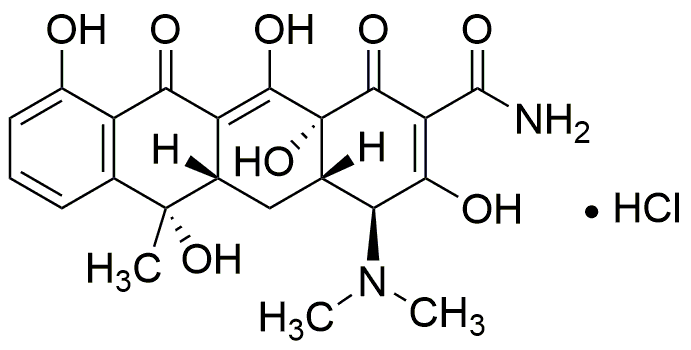Tetracycline hydrochloride powder is widely utilized in research focused on:
- Antibiotic Development: This compound is a cornerstone in the development of broad-spectrum antibiotics, effectively treating various bacterial infections in both humans and animals.
- Agricultural Applications: It is used in veterinary medicine to promote growth and prevent disease in livestock, enhancing food security and animal health.
- Research in Microbiology: Tetracycline is employed in laboratory settings to study bacterial resistance mechanisms, providing insights that can lead to the development of new therapeutic strategies.
- Pharmaceutical Formulations: The compound serves as a key ingredient in various formulations, ensuring effective delivery of medication for treating infections, particularly in cases of penicillin resistance.
- Environmental Studies: It is utilized in studies assessing the impact of antibiotics in ecosystems, helping researchers understand how these compounds affect microbial communities in soil and water.
General Information
Properties
Safety and Regulations
Applications
Tetracycline hydrochloride powder is widely utilized in research focused on:
- Antibiotic Development: This compound is a cornerstone in the development of broad-spectrum antibiotics, effectively treating various bacterial infections in both humans and animals.
- Agricultural Applications: It is used in veterinary medicine to promote growth and prevent disease in livestock, enhancing food security and animal health.
- Research in Microbiology: Tetracycline is employed in laboratory settings to study bacterial resistance mechanisms, providing insights that can lead to the development of new therapeutic strategies.
- Pharmaceutical Formulations: The compound serves as a key ingredient in various formulations, ensuring effective delivery of medication for treating infections, particularly in cases of penicillin resistance.
- Environmental Studies: It is utilized in studies assessing the impact of antibiotics in ecosystems, helping researchers understand how these compounds affect microbial communities in soil and water.
Documents
Safety Data Sheets (SDS)
The SDS provides comprehensive safety information on handling, storage, and disposal of the product.
Product Specification (PS)
The PS provides a comprehensive breakdown of the product’s properties, including chemical composition, physical state, purity, and storage requirements. It also details acceptable quality ranges and the product's intended applications.
Certificates of Analysis (COA)
Search for Certificates of Analysis (COA) by entering the products Lot Number. Lot and Batch Numbers can be found on a product’s label following the words ‘Lot’ or ‘Batch’.
*Catalog Number
*Lot Number
Certificates Of Origin (COO)
This COO confirms the country where the product was manufactured, and also details the materials and components used in it and whether it is derived from natural, synthetic, or other specific sources. This certificate may be required for customs, trade, and regulatory compliance.
*Catalog Number
*Lot Number
Safety Data Sheets (SDS)
The SDS provides comprehensive safety information on handling, storage, and disposal of the product.
DownloadProduct Specification (PS)
The PS provides a comprehensive breakdown of the product’s properties, including chemical composition, physical state, purity, and storage requirements. It also details acceptable quality ranges and the product's intended applications.
DownloadCertificates of Analysis (COA)
Search for Certificates of Analysis (COA) by entering the products Lot Number. Lot and Batch Numbers can be found on a product’s label following the words ‘Lot’ or ‘Batch’.
*Catalog Number
*Lot Number
Certificates Of Origin (COO)
This COO confirms the country where the product was manufactured, and also details the materials and components used in it and whether it is derived from natural, synthetic, or other specific sources. This certificate may be required for customs, trade, and regulatory compliance.


